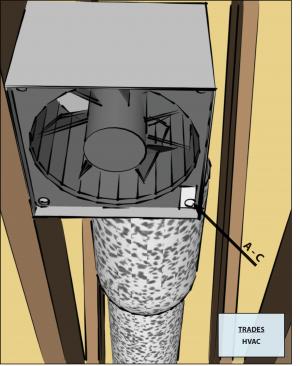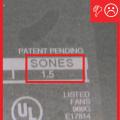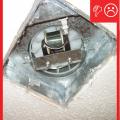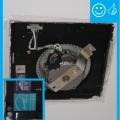Scope
For continuous supply or exhaust fans, select quiet fans with a sone rating of 1.0 or less. The sone rating should be listed on the product label or in the manufacturer's license.
See the Compliance Tab for links to related codes and standards and voluntary federal energy-efficiency program requirements.
Description
To meet ASHRAE 62.2 ventilation requirements, the HVAC designer may specify that an exhaust fan should be set for continuous operation. Fans that are overly noisy are more likely to be turned off by the home owner, circumventing the fan’s intended purpose of providing required whole-house ventilation. To encourage continual use, quiet fans should be specified and installed. Fan noise is measured in sones; the lower the sone, the quieter the fan. Exhaust or supply fans installed for continuous use should have a sone rating of 1.0 sones or less. For comparison, a quiet refrigerator operates at about 1.0 sone.
Fans exempted from this requirement include HVAC air handlers, and remote-mounted fans. To be considered exempt, a remote-mounted fan must be mounted outside the habitable spaces, including bathrooms and hallways, and there must be at least 4 feet of ductwork between the fan and intake grill.
For more on continuously operating exhaust fans and ASHRAE 62.2 requirements, see Continuously Operating Ventilation and Exhaust Fans.
How to Select 1.0 Sone Supply and Exhaust Fans
- When specifying and purchasing bathroom fans that will be exhaust or supply fans that will be used continuously, select quiet fans with a sone rating of 1.0 or less. The sone rating should be listed on the product label or in the manufacturer’s literature.
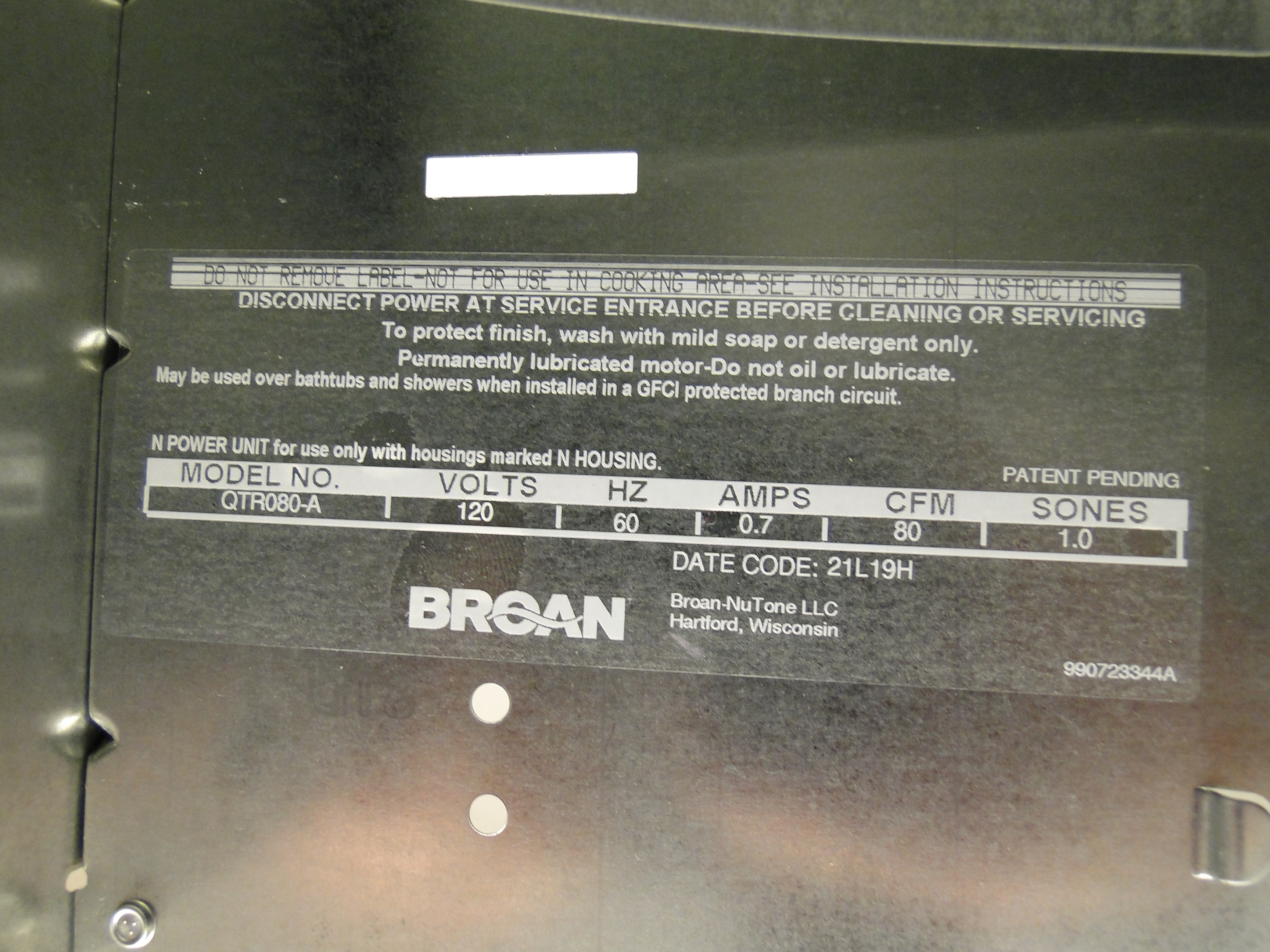
Success
In homes where an exhaust or supply fan is installed that will operate continuously, the HERS rater should inspect to ensure that the fan’s noise level is rated at less than or equal to 1.0 sone by the manufacturer.
Climate
No climate specific information applies.
Training
Compliance
More
More Info.
Access to some references may require purchase from the publisher. While we continually update our database, links may have changed since posting. Please contact our webmaster if you find broken links.
The following authors and organizations contributed to the content in this Guide.
Sales
High-Efficiency Fans = High-Efficiency Fans

High-efficiency exhaust fans and ceiling fans are more energy efficient and quieter than standard fans.
